
In a groundbreaking achievement, scientists from the University of Texas at El Paso have unveiled the first known photographs of the elusive Yellow-crested Helmetshrike, a bird species that had been classified as ‘lost’ for nearly two decades by the American Bird Conservancy. The discovery was made during a six-week expedition to the eastern Democratic Republic of the Congo, where the researchers, led by UTEP assistant professor Michael Harvey, encountered a small flock of these captivating birds in the Itombwe Massif mountains. The Yellow-crested Helmetshrike, characterized by its striking black plumage and a vibrant yellow “helmet,” had not been sighted in such a significant number for an extended period.

The encounter with the helmetshrikes was described as a “mind-blowing experience” by Dr. Harvey, emphasizing the unique and spectacular nature of the species. The finding is particularly noteworthy as the Albertine Rift of Central Africa, where the helmetshrike is endemic, has been historically inaccessible due to conflict and security concerns. The researchers expressed optimism that the discovery could indicate a reasonably healthy population of the species in the remote forests of the region, offering hope for its conservation despite the encroachment of mining, logging, and agriculture into the pristine habitats of the Itombwe range. The scientists are now collaborating with conservation organizations to devise strategies to protect the Yellow-crested Helmetshrike and its habitat in the face of ongoing environmental threats.
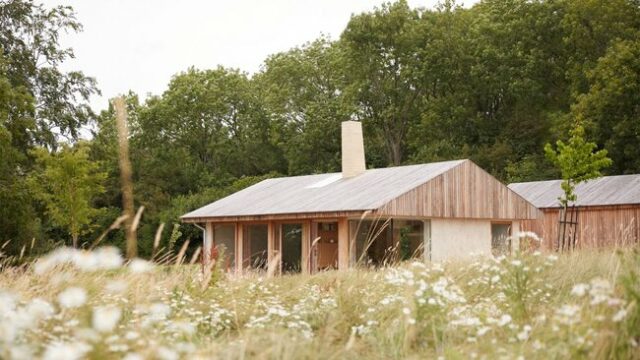
Hutch Design has masterfully transformed a once-utilitarian concrete pig shed into The Maker’s Barn, a captivating holiday home located on the outskirts of London. Embracing a palette of “natural and honest” materials, the 65-square-meter retreat seamlessly integrates into the wild grassland surrounded by a forest. Originally a concrete pig shed, the structure has undergone a remarkable metamorphosis, featuring thick plaster walls, timber columns, and a larch-plank roof that mimics the local architectural style. The bespoke fittings inside, including handmade furniture, ceramics, kitchenware, and light shades, contribute to the project’s name, reflecting the commitment to using authentic materials that harmonize with the landscape over time.
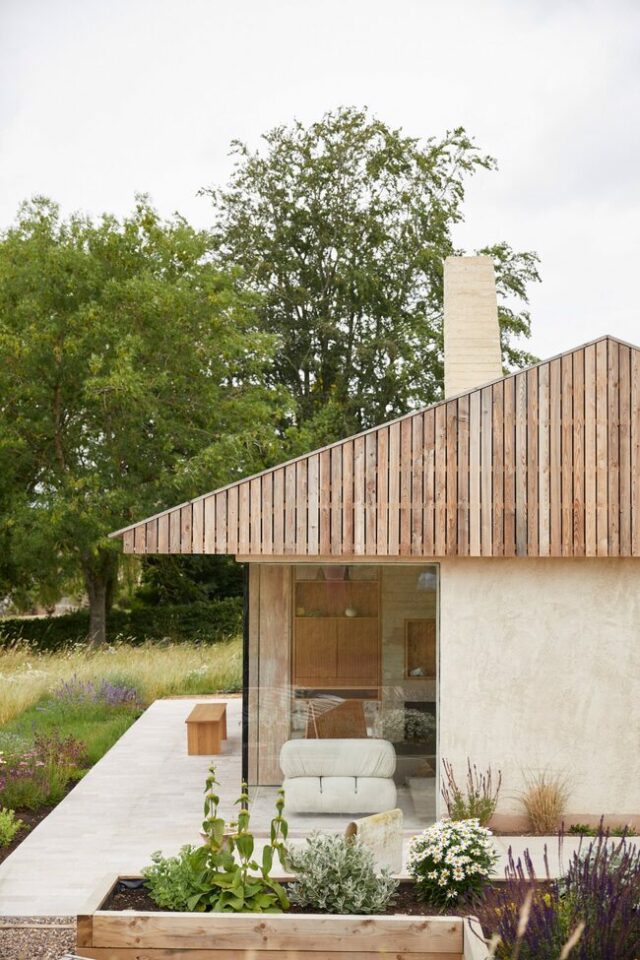
The Maker’s Barn is a testament to the studio’s approach to contemporary reinterpretation of the local vernacular, drawing inspiration from the visual richness of thatched Tudor cottages and the traditional timber structures in the region. The single-storey layout comprises an open living, dining, and kitchen area separated by a central concrete fireplace from a bedroom and study. Full-height glazing and sliding doors along the north side invite the picturesque landscape indoors, ensuring every position within the barn offers a framed view of the stunning hills. Hutch Design’s meticulous attention to detail is evident in the bedroom, featuring a skylit shower area, a sunken bath with panoramic views, and a strategically placed bookshelf that divides spaces while maintaining a visual connection. The kitchen, with its parquet wooden floor seamlessly transitioning to tiles, is illuminated by a large skylight, showcasing the studio’s commitment to maximizing space and creating a seamless blend of interior and exterior elements.
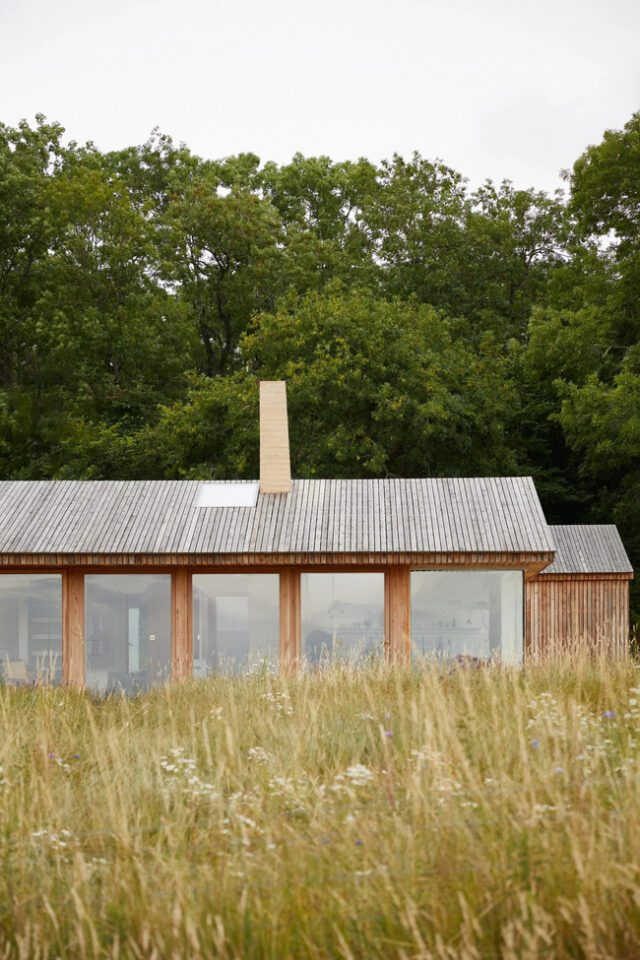
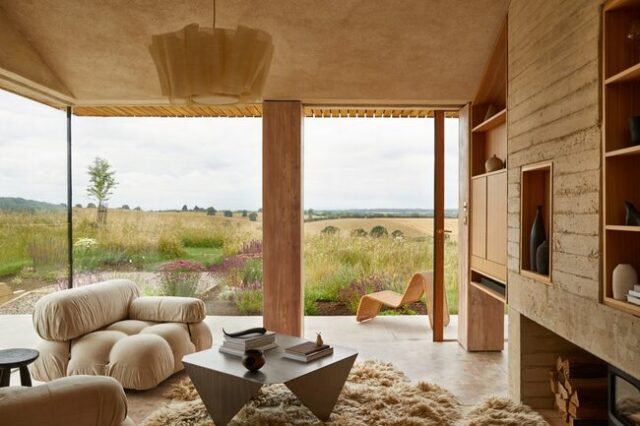
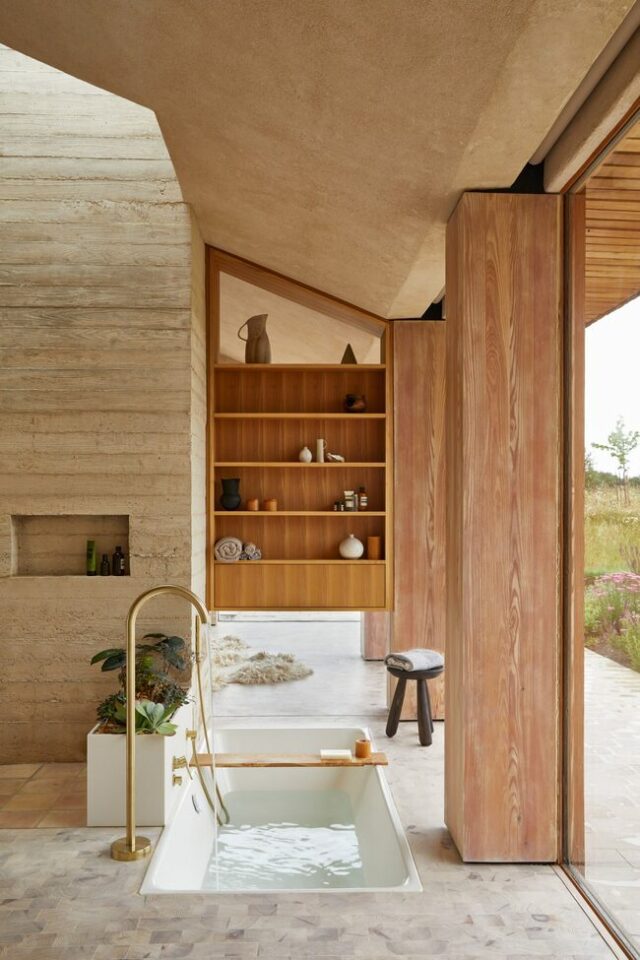

The discovery of 8,200-year-old cave art in Patagonia’s Cueva Huenul 1 (CH1) in South America has shed light on ancient human activities and the environmental conditions they faced. The 895 paintings found in the cave, along with artifacts like shell beads, decorated animal bones, and engraved gourds, represent evidence of early human settlements at the southern tip of the continent, dating back approximately 12,000 years. Carbon dating using accelerator mass spectrometry on charcoal within the drawings revealed their age, with the “comb”-shaped black sketches estimated to be 8,171 years old. The diversity of drawings, including abstract, human, and animal figures, suggests that these artworks were created throughout 130 generations by a thinly distributed and highly mobile hunter-gatherer population.

The ancient climate of the region during the mid-Holocene, around 10,000 to 7,000 years ago, was characterized by aridity. The research indicates that human populations did not experience significant growth during this period, and there may have been periodic population crashes rather than long-term stability. Ramiro Barberena, a co-author of the paper, highlighted that the sites from the mid-Holocene did not show intense occupations, implying that small human groups likely moved across wider areas. The cave art in Patagonia not only provides a glimpse into the creative expressions of ancient humans but also offers valuable insights into their adaptive strategies in response to environmental conditions, contributing to our understanding of the region’s earliest inhabitants.
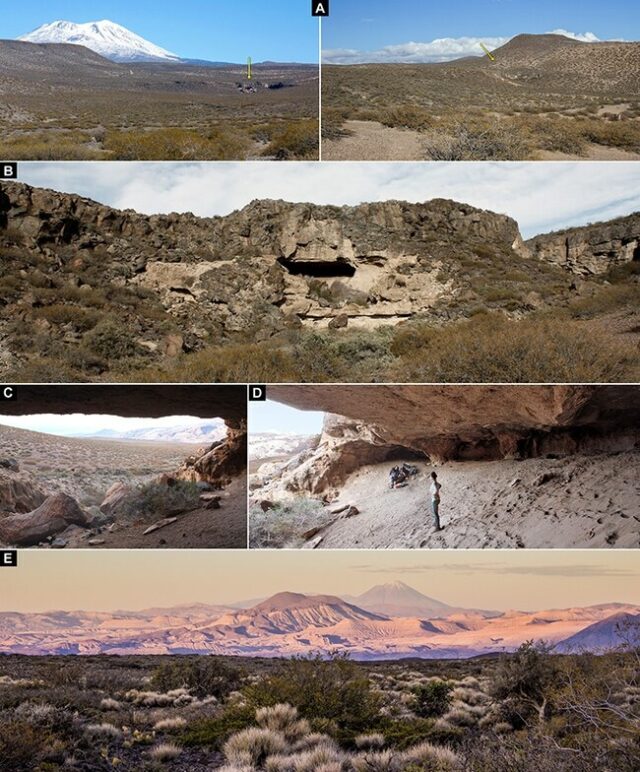
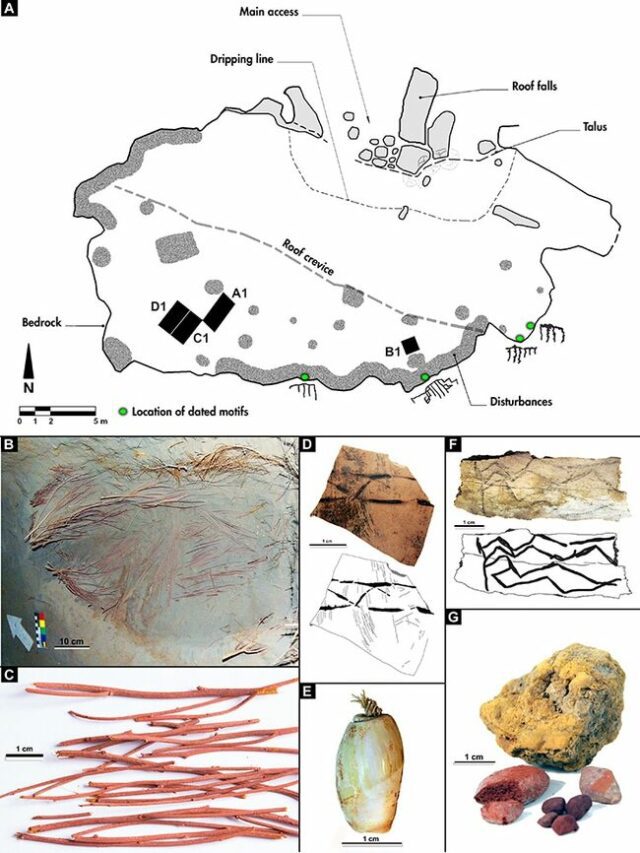

The IcePro, crafted by Minnesota-based Eveland’s Inc., stands out as the ideal companion for avid ice anglers seeking a compact and efficient solution for their frozen escapades. This innovative compact ATV hauling trailer is not just a means of transportation; it transforms into a mobile fishing house, designed to make ice fishing a comfortable and enjoyable experience. The boxy profile, based on an aluminum frame, showcases a striking neon blue line that divides the top white and bottom black color fiberglass exterior. This design not only adds a touch of style but also ensures the trailer is lightweight and easy to tow behind an ATV. Inside the IcePro, a well-insulated molded plastic interior provides a cozy haven for ice anglers, offering warmth even in harsh weather conditions.

The 17-foot by 6.5-foot structure, standing at 6.8 feet high, allows for ample space to accommodate both the occupants and their gear. The IcePro is equipped to carry up to 1,200 lbs of payload, making it a versatile and efficient solution for hauling necessary equipment across frozen lakes. Priced at $24,995, the IcePro includes a dedicated garage space for an ATV, ensuring ease of transport and storage. With features like a winch tire system to lower the trailer onto the ice and numerous catch-cover fishing holes, the IcePro is tailored for ice fishing enthusiasts seeking a seamless and convenient experience on frozen landscapes. While the minimalist layout emphasizes functionality, optional add-ons such as swivel captain’s chairs, a generator, a fish finder system, kitchen appliances, and an inflatable mattress allow users to customize their IcePro to meet their specific needs. Whether you are an ice angler looking for a mobile fishing solution or an adventure enthusiast ready to explore frozen terrains, the IcePro emerges as the ultimate toy hauler for your icy escapades.
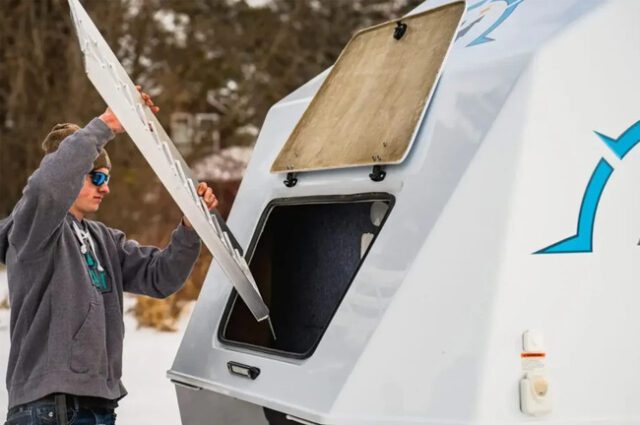







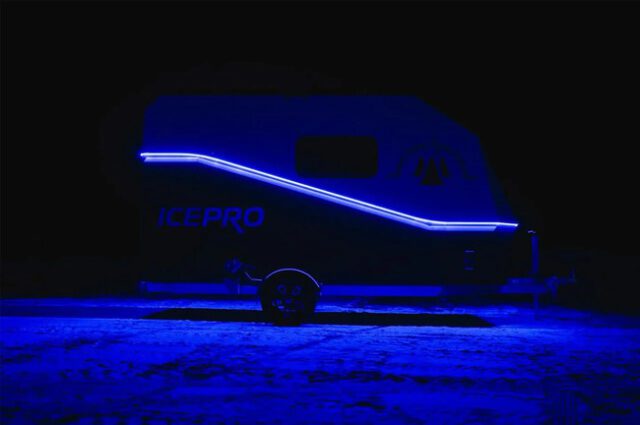



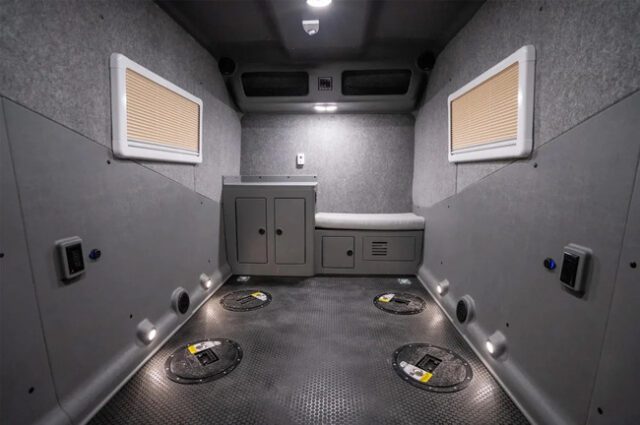
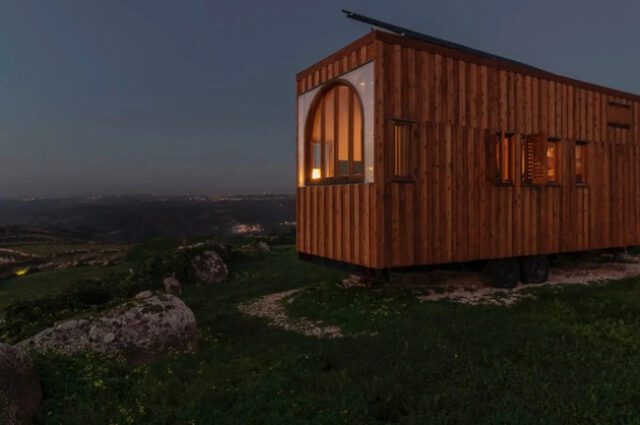
The craftsmanship displayed in the construction of the Vigia by Portugal-based Madeiguincho is a testament to the family’s exceptional skills in wood and timber craftsmanship. Founded by a family of carpenters, Madeiguincho has created a unique off-grid tiny home that not only reflects their expertise but also stands out in terms of aesthetics. The Vigia, meaning “Lookout” in Portuguese, is a 23-foot-long home built on a double-axle trailer. The entire structure, both inside and out, is adorned with exquisite wood finishes, showcasing the mastery of the artisans in creating a warm and inviting living space. The interior of the Vigia is bathed in natural light, thanks to an abundance of glazing strategically incorporated into the design. Wood shutters are thoughtfully installed to provide control over the amount of light entering the living space.

The central area of the home features a well-equipped kitchen with custom cabinetry, an electric cooktop, and a sink. Connected to the kitchen is a cozy living room, complete with an L-shaped sofa, a wood-burning stove, decorative windows, and ample storage space. The bathroom, situated opposite the living room, boasts a composting toilet, sink, and shower, with the added convenience of a secondary entrance accessible from the outside. The Vigia’s bedroom is a loft space accessible by a fixed ladder, featuring a double bed and the characteristic low ceiling commonly found in tiny homes. The home’s ability to function off-grid is made possible by a solar panel array on the roof, connected to a battery system, along with installed water tanks, making it a sustainable and self-sufficient living space. Ultimately, Vigia’s USP lies in the specialized and stunning timber craftsmanship, elevating it above typical tiny homes and placing it at the forefront of aesthetics and design.
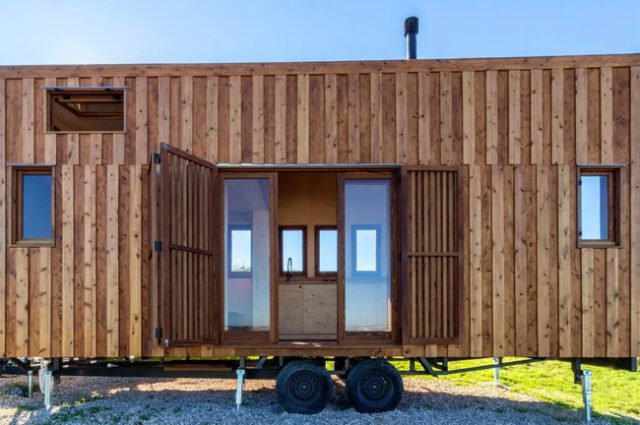

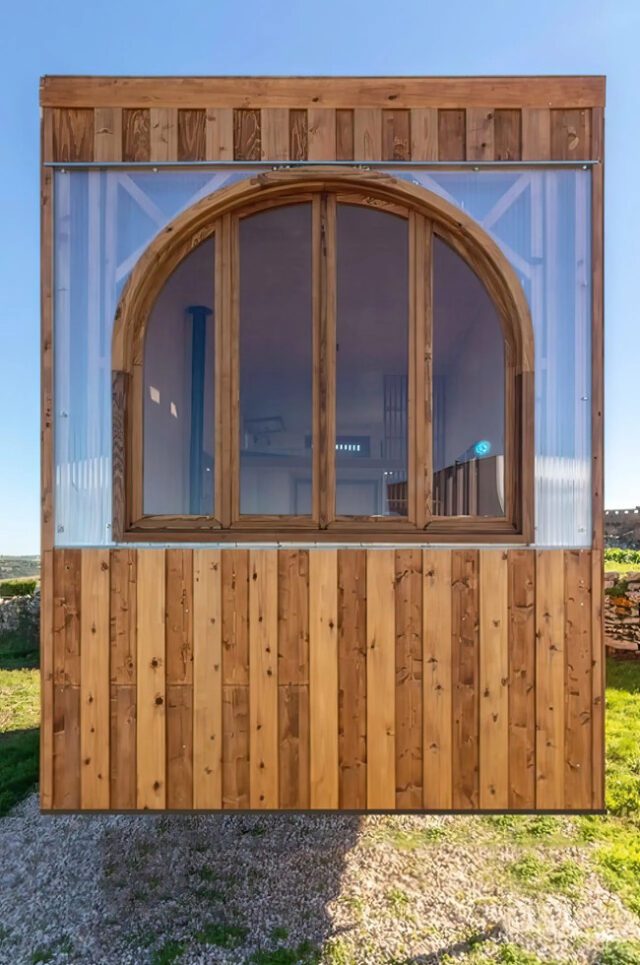
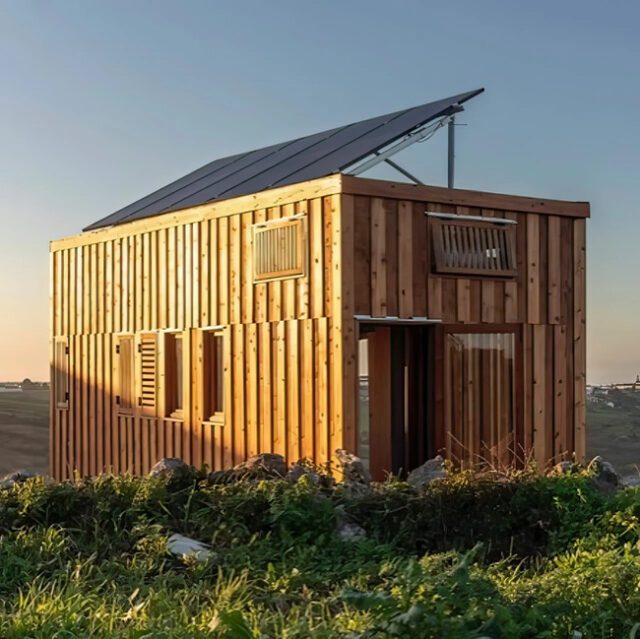
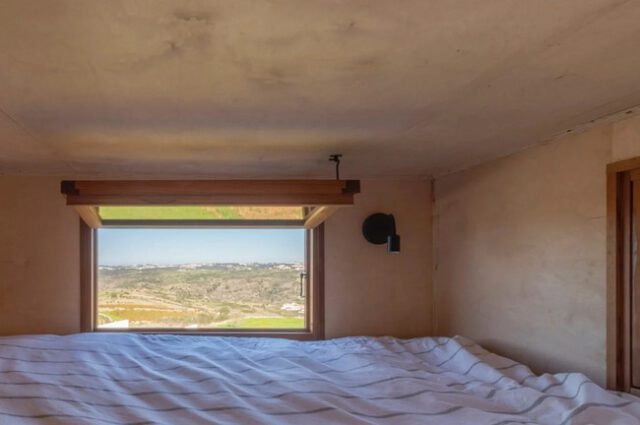
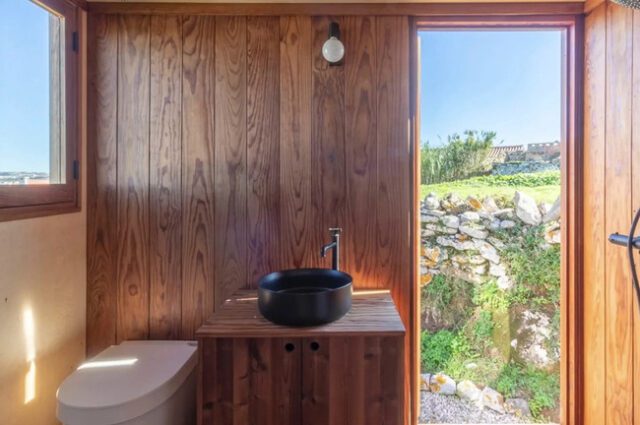
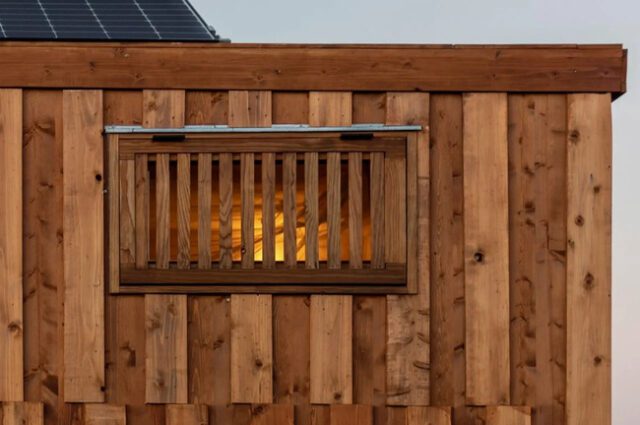
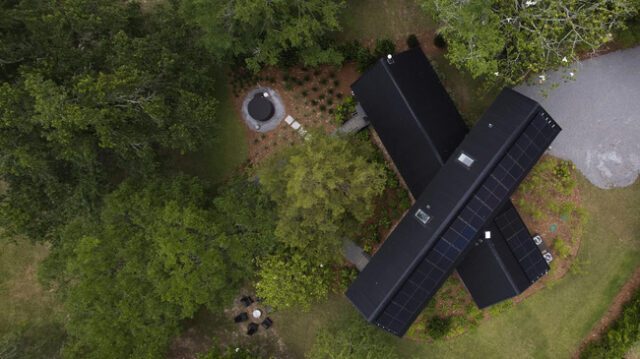
Tall Architects has unveiled the Fowl River Cabin, a striking residence nestled along the Gulf of Mexico in Theodore, Alabama. The 2,100-square-foot dwelling features a unique design with two gabled forms arranged in an X-shape, creating an architectural spectacle. The positioning of the building was meticulously planned, considering the interaction with the river, existing trees, and neighboring structures. Elevated four feet above the ground on steel columns, the cabin’s exterior is clad in black corrugated metal, chosen for its ability to blend into the landscape while providing resilience against the region’s hurricane-force winds and rain.
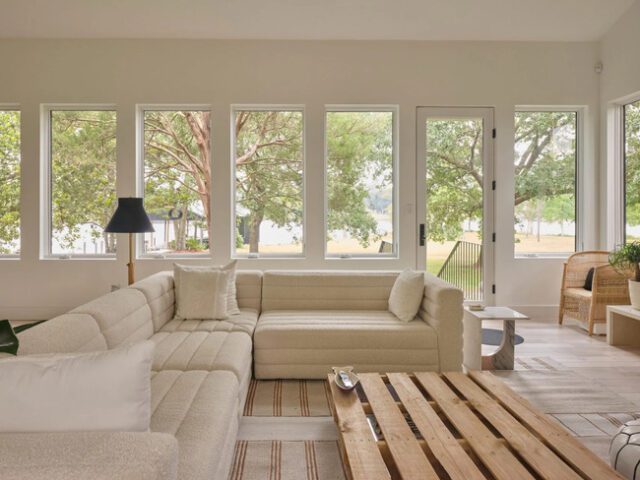
The thoughtful integration of the natural surroundings is evident in the design, allowing the owners to seamlessly transition between the interior and exterior spaces throughout the day. The lower level encompasses public areas, including an open-plan living, dining, and kitchen space, while the upper floor holds two suites and a porch. The cantilevered upper storey creates an enclosed porch that connects to an angular deck enveloping existing trees. The material palette, chosen by owner Jill Dupre, juxtaposes the moody black exterior with light, bright, and airy interiors featuring natural wood flooring, white paint, and metallic accents. The cabin’s sustainability is enhanced with solar panels, cross-ventilation, and an elevated foundation facilitating natural cooling around and beneath the structure. Overall, Tall Architects’ Fowl River Cabin stands as a testament to the harmonious design, seamlessly blending architectural innovation with environmental sensitivity.
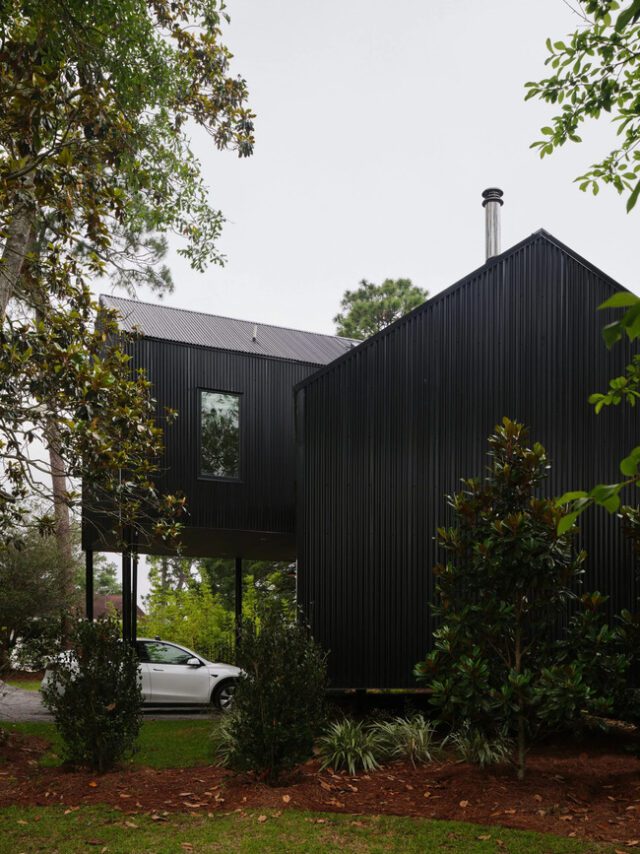
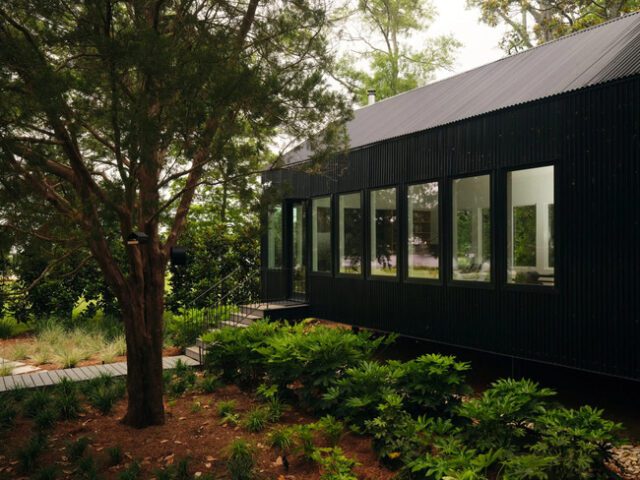
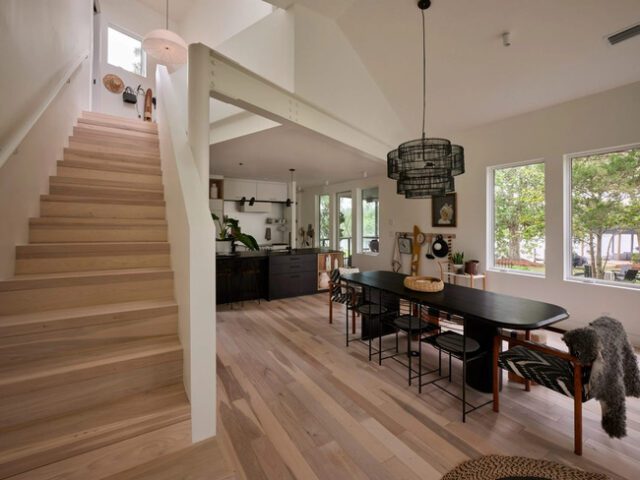
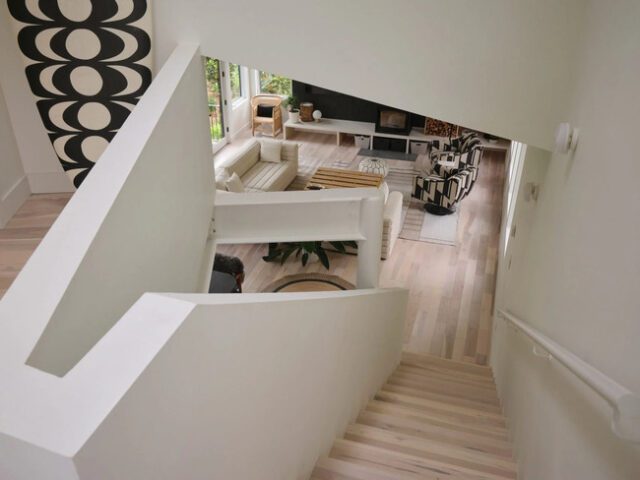
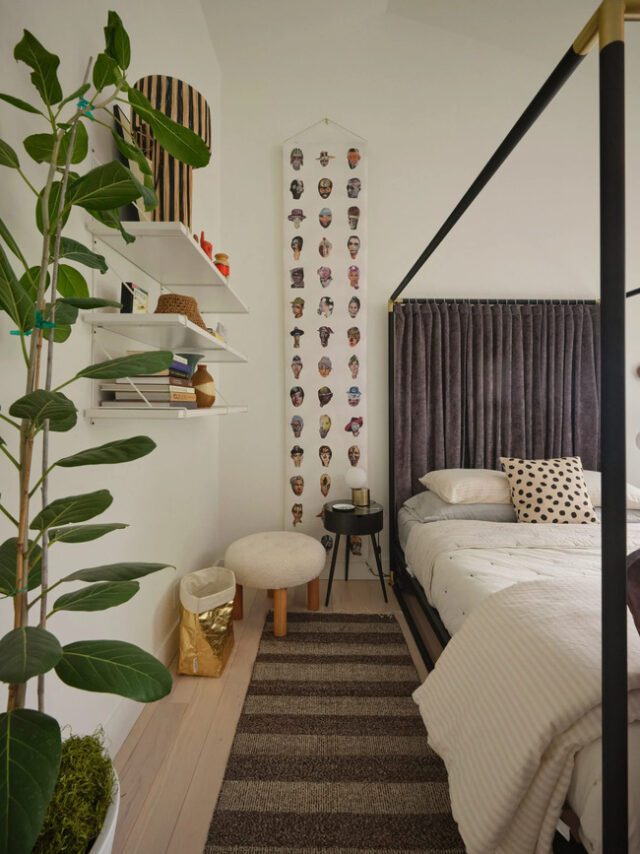
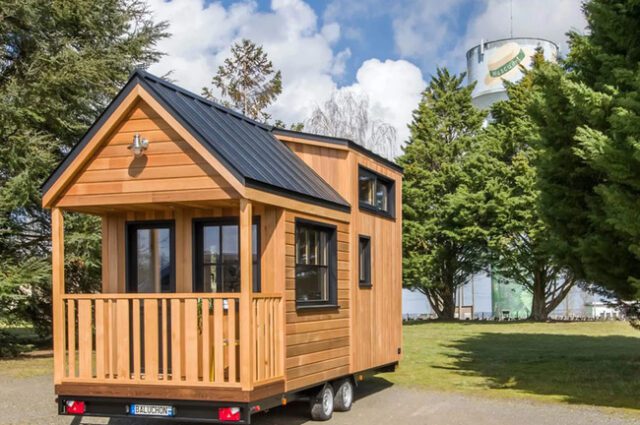
The Miss Twain Tiny House by Baluchon is a charming departure from the contemporary tiny home trend, embracing a traditional design reminiscent of classic novels. Measuring 20 feet and mounted on a double-axle trailer, this quaint dwelling is adorned with a red cedar finish and an aluminum roof, Continue reading “Idyllic Little Home With a Porch Reading Area Looks Straight Out of a Classic Novel” »
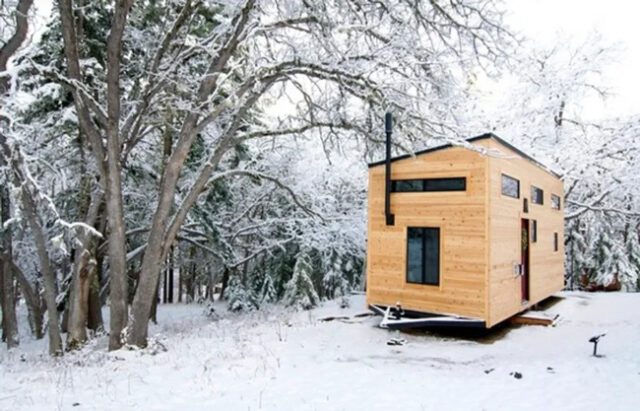
After breaking free from the relentless pursuit of the American Dream, Andrew and Gabriella Morrison embarked on a transformative journey to redefine their lives. In a bold move, the couple abandoned their conventional home, shedding 90% of their possessions in the process, and dedicated five months to crafting a blueprint for a simpler, clutter-free existence. The result was the creation of “hOMe,” a modest 207-square-foot house that stands in stark contrast to the sprawling McMansions typical of the American suburban landscape. For the Morrisons, the tiny dwelling encapsulates everything essential for their happiness, challenging societal norms and embracing a minimalist lifestyle that prioritizes purpose over excess.
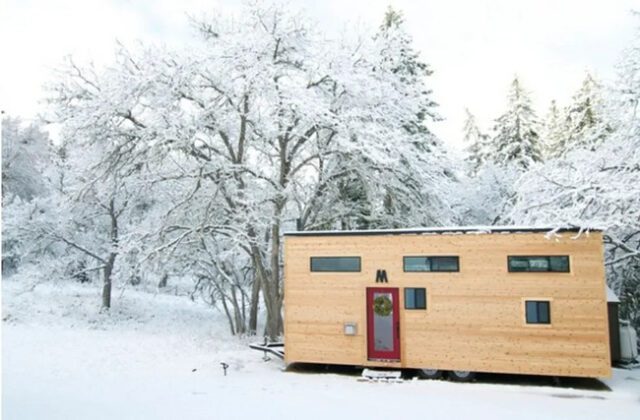
The concept of the tiny house movement resonated deeply with Gabriella, who expressed her enthusiasm on their website, stating, “When I first read about the tiny house movement a few years ago, I lit up because reflected before me was a way of life that I had been longing for – uncluttered, environmentally safe, affordable. Conscious living.” Currently residing in their diminutive haven, the Morrisons proudly declare themselves off-grid and debt-free. By liberating themselves from the burdens of excessive space and financial obligations, they now utilize the savings to travel and relish quality time together as a family, proving that a fulfilling life can indeed be found in the simplicity of a tiny, well-designed abode.
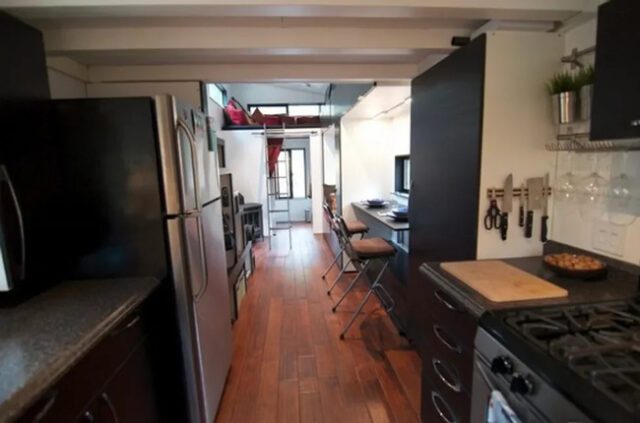
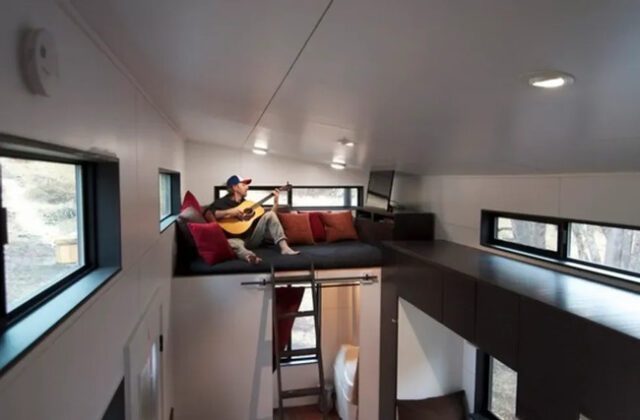
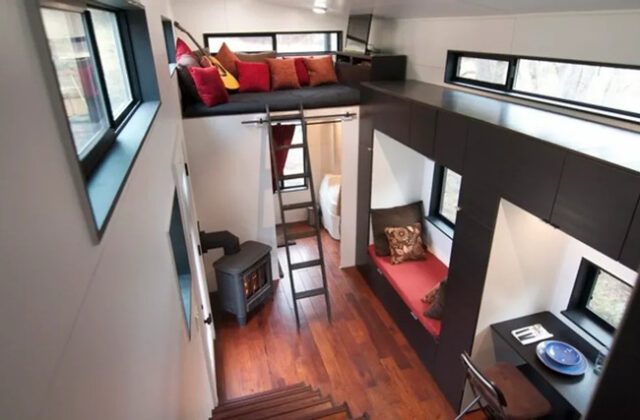
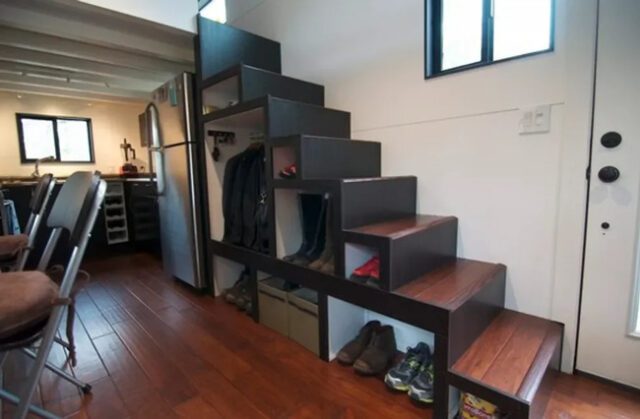
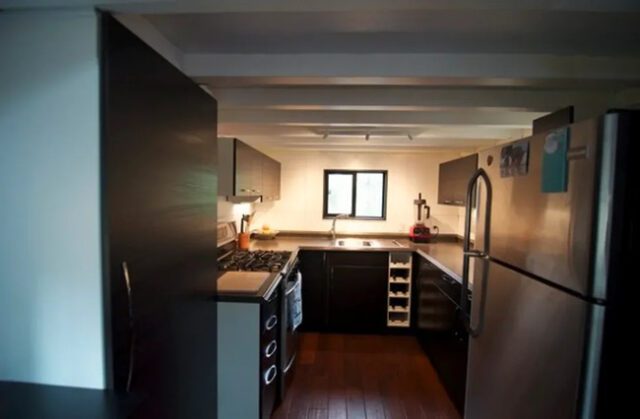
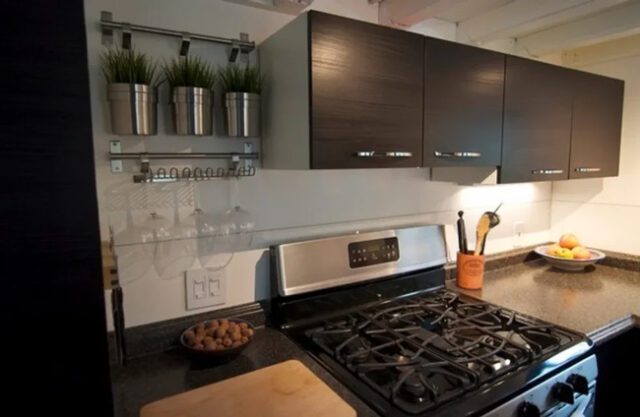
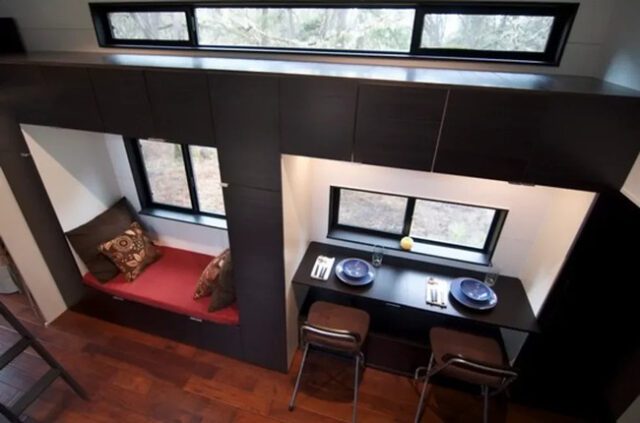
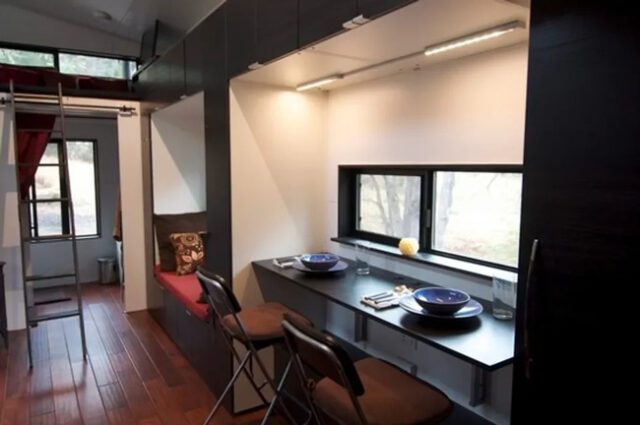

The unveiling of the Italian-made exoskeleton, named ‘Twin,’ marks a significant leap in the realm of assistive technology designed to enhance the mobility and quality of life for individuals with mobility impairments. Developed through a collaborative effort between the Italian Institute of Technology and the National Insurance Institute of Workplace Injuries, the exoskeleton boasts innovative features tailored to different levels of leg functionality. Its controls offer three Continue reading “Italian-Made Exoskeleton Gets Disabled Users Walking and Standing” »







































































